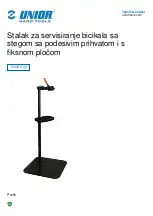
Troubleshooting 9:10
CP 1 – Cathodic Protection Tester Course Manual
©
NACE International, 2000
07/01/04
At least once each year (usually at the time of the annual corrosion survey),
rectifiers should be thoroughly and systematically inspected. Special
attention should be given to the following items:
•
Clean and tighten all current-carrying connections.
•
Clean all vent screens and remove any obstructions.
•
Remove any insect or animal nests and plug entry points.
•
Check indicating meters for accuracy by comparing with calibrated
portable instruments.
•
Replace any wire with cracked or deteriorated insulation.
•
Check all protective devices (circuit breakers, fuses, or lightning
arrestors) for evidence of damage.
•
Carefully inspect for evidence of excessive heating.
•
For oil immersed units, check color and level of oil. Change oil if
rectifier components cannot be seen beneath the oil.
Output Problems
A good maintenance program can often detect potential rectifier failures
before they occur allowing scheduled repair before an actual outage. Even
with the best of maintenance programs, however, failures do occur. Often
basic step-by-step troubleshooting techniques can determine the cause of
the outage. For the following discussions, only standard single-phase,
manual adjustment type rectifiers are considered.
When checking rectifier outputs on a routine basis, there are four basic
cases of symptoms requiring investigation: zero current and voltage
outputs, zero current output with unchanged output voltage, significant
current change with unchanged voltage, or significant changes in both
voltage and current outputs.
Zero Current and Voltage Outputs:
For the case of zero output for both current and voltage, either there is no
input power to the unit or an open circuit within the rectifier is indicated.
First, determine if input AC voltage is present. If not, the problem is
external to the rectifier. If AC voltage is present at the input terminals, an
open circuit exists within the rectifier. However, the open circuit may be
due to a tripped circuit breaker at the rectifier input.
The component causing the open circuit can be located by realizing that the
rectifier voltage must exist across the open circuit element. If it is
Содержание CP 1
Страница 1: ...CP 1 Cathodic Protection Tester Course Manual February 2005 NACE International 2000 ...
Страница 265: ......
Страница 266: ......
Страница 267: ......
Страница 268: ......
Страница 301: ...RP0169 2002 32 NACE International ISBN 1 57590 035 1 ...
Страница 535: ...TM0101 2001 24 NACE International ISBN 1 57590 137 4 ...
















































